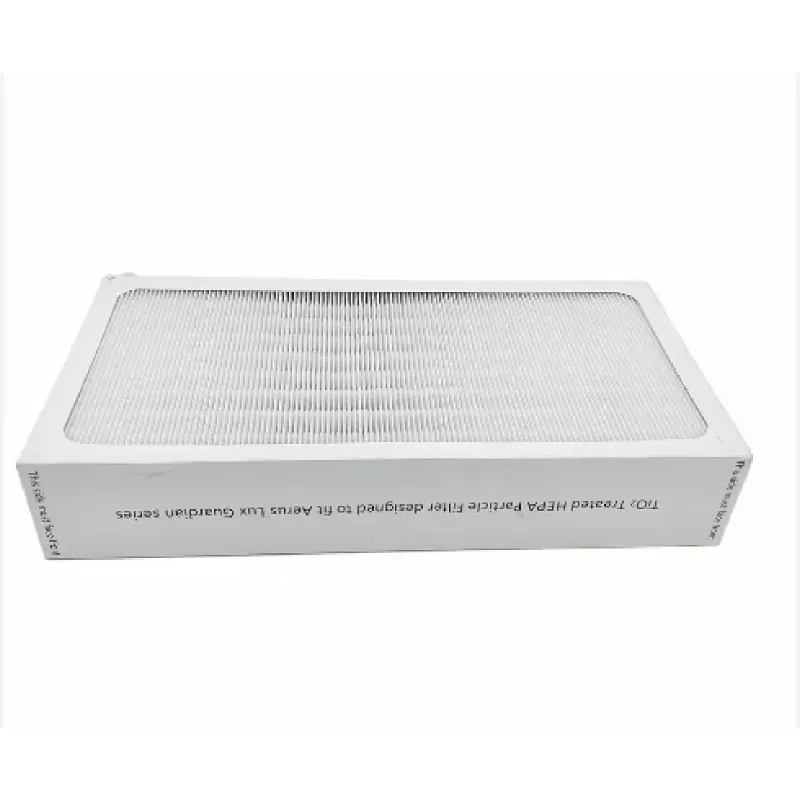Understanding the Power of Advanced Air Filtration Technology
Indoor air quality has become a growing concern for homeowners worldwide, with increasing awareness about airborne pollutants and their impact on health. Activated carbon air filters represent the gold standard in air purification technology, offering a sophisticated solution to combat indoor air pollution. These remarkable filters utilize the complex structure of activated carbon to trap and eliminate a wide range of contaminants, creating a healthier living environment for you and your family.
Modern homes face numerous air quality challenges, from cooking odors and pet dander to volatile organic compounds (VOCs) released by household products. An activated carbon air filter stands out as a powerful defense against these invisible threats, working tirelessly to maintain clean, fresh air throughout your living spaces.

The Science Behind Activated Carbon Filtration
Chemical Structure and Adsorption Process
The effectiveness of an activated carbon air filter lies in its unique molecular structure. Through a specialized activation process, carbon develops millions of microscopic pores, creating an enormous surface area within a compact filter. This extensive network of pores enables the filter to capture and retain particles and gases through a process called adsorption. Unlike absorption, where molecules are dissolved, adsorption allows contaminants to bind to the carbon's surface, effectively removing them from circulating air.
The activated carbon material used in these filters undergoes careful treatment at high temperatures, which enhances its adsorptive properties. This process creates a highly porous structure with an incredible surface area – just one gram of activated carbon can have a surface area equivalent to several football fields.
Types of Pollutants Eliminated
An activated carbon air filter excels at removing a diverse range of airborne contaminants. These include common household odors, tobacco smoke, cooking fumes, and pet-related smells. More importantly, these filters effectively capture harmful VOCs emitted by cleaning products, paint, new furniture, and building materials. The filter's ability to trap gaseous pollutants sets it apart from traditional mechanical filters that only capture particulate matter.
The advanced filtration system also helps eliminate harmful chemicals like benzene, formaldehyde, and other industrial solvents that may be present in indoor air. This comprehensive approach to air purification makes activated carbon filters particularly valuable for maintaining healthy indoor air quality.
Benefits of Installing Activated Carbon Filtration
Health Advantages for Residents
Installing an activated carbon air filter in your home can lead to significant health improvements. By removing harmful pollutants and chemical vapors, these filters help reduce the risk of respiratory issues, allergies, and other health concerns associated with poor air quality. Residents often report fewer headaches, better sleep, and reduced allergy symptoms after installing activated carbon filtration systems.
The filtration process also helps protect vulnerable family members, such as children, elderly individuals, and those with existing respiratory conditions. By creating a cleaner air environment, these filters contribute to overall wellness and long-term health benefits for all household members.
Environmental Impact and Energy Efficiency
Choosing an activated carbon air filter aligns with environmental consciousness. These filters operate without releasing harmful byproducts or ozone, making them an environmentally responsible choice for air purification. The sustainable nature of activated carbon, often derived from renewable sources like coconut shells or wood, further enhances their eco-friendly profile.
Modern activated carbon filters are designed for optimal energy efficiency, requiring minimal power while delivering maximum air purification benefits. This efficiency translates to lower energy bills while maintaining superior air quality throughout your home.
Maintenance and Long-term Performance
Filter Replacement Guidelines
To maintain optimal performance of your activated carbon air filter, regular maintenance is essential. The frequency of filter replacement depends on various factors, including air quality conditions, usage patterns, and the specific model of your filtration system. Generally, experts recommend replacing activated carbon filters every 3-6 months for optimal effectiveness.
Monitor your filter's performance by paying attention to changes in air quality and any decrease in odor removal efficiency. Some advanced systems include indicators that signal when replacement is necessary, taking the guesswork out of maintenance scheduling.
Optimizing Filter Performance
Getting the most out of your activated carbon air filter involves proper placement and usage. Position air purifiers in areas with good airflow and away from obstacles that might restrict air circulation. Regular cleaning of pre-filters and maintaining proper ventilation in your home will help extend the life of your activated carbon filter and ensure consistent performance.
Consider using multiple filtration units for larger homes or spaces with specific air quality challenges. This strategic approach ensures comprehensive coverage and maintains consistent air quality throughout your living space.
Frequently Asked Questions
How does an activated carbon air filter differ from standard air filters?
Activated carbon air filters specialize in removing gaseous pollutants and odors through adsorption, while standard filters primarily catch particulate matter. The activated carbon's unique porous structure allows it to trap molecules at the molecular level, providing superior removal of chemicals, VOCs, and odors that regular filters cannot capture.
What is the expected lifespan of an activated carbon filter?
The typical lifespan of an activated carbon air filter ranges from 3-6 months, depending on usage conditions and indoor air quality. Heavy pollution, frequent cooking, or the presence of pets may necessitate more frequent replacements to maintain optimal filtration performance.
Can activated carbon filters remove all types of indoor air pollutants?
While activated carbon air filters excel at removing gaseous pollutants, odors, and VOCs, they work best when combined with HEPA filters for complete air purification. This combination effectively addresses both particulate and gaseous contaminants, providing comprehensive air quality improvement for your home.

